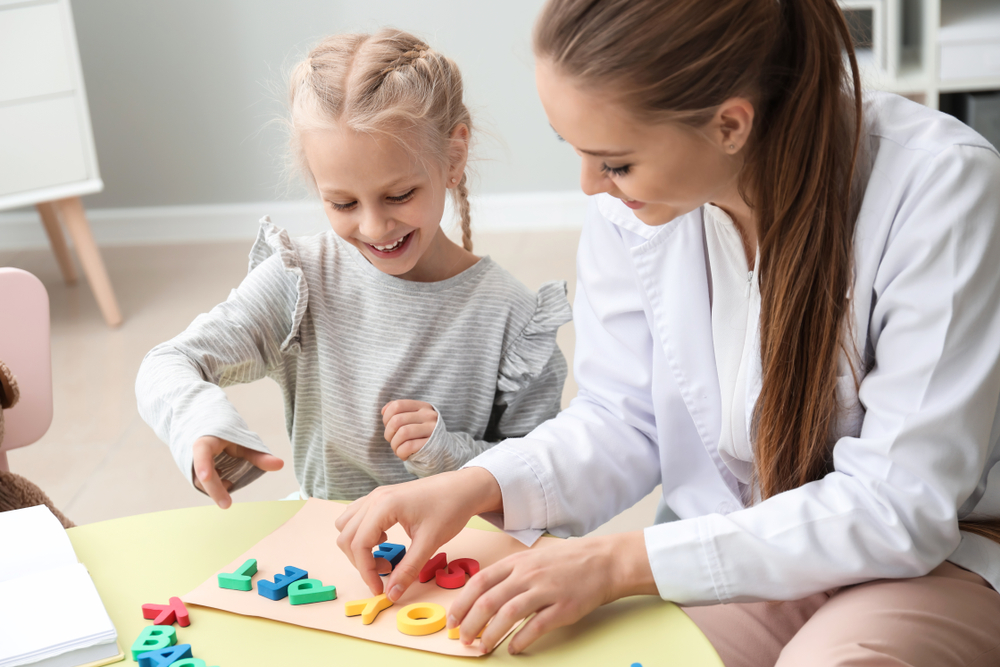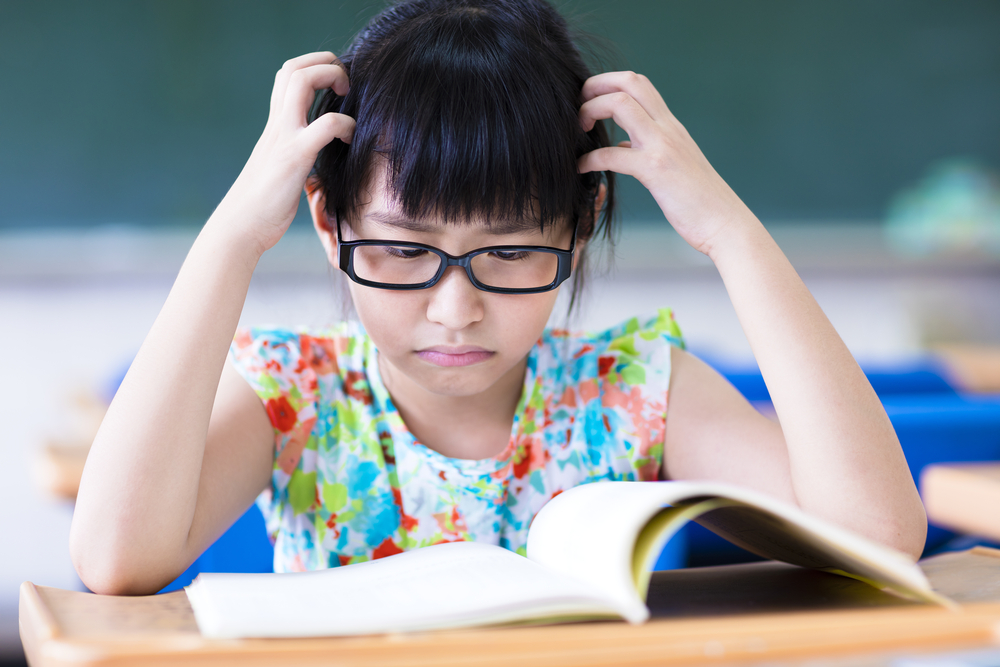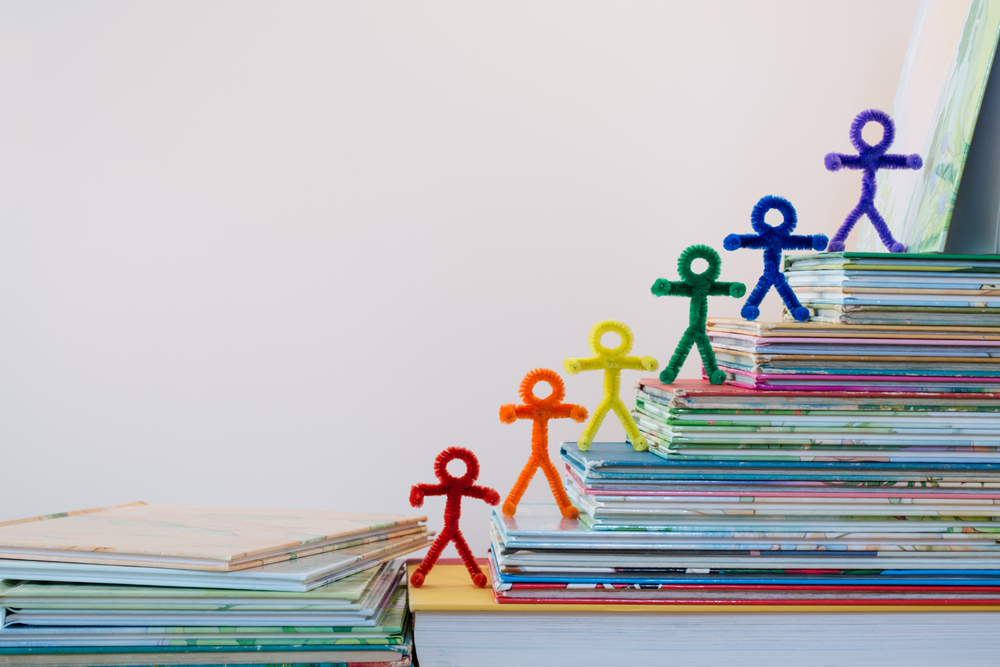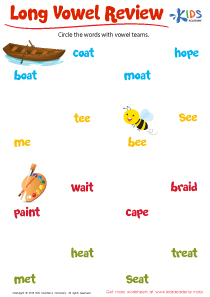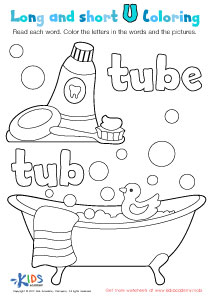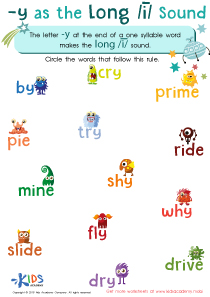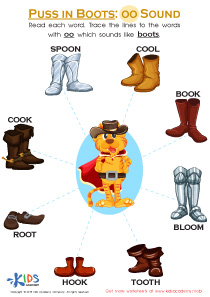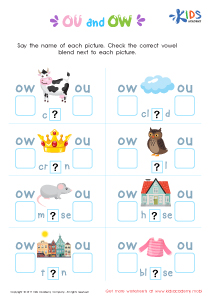Vowel Blends Worksheets for Ages 5-7
12 filtered results
-
From - To
Introduce your child to the exciting world of vowel blends with our engaging worksheets designed for ages 5-7! These printable resources are perfect for young learners to enhance their phonemic awareness and reading skills. Each worksheet offers a variety of fun activities, including tracing, matching, and fill-in-the-blank exercises that focus on common vowel blends like "ai," "ea," and "ou." By practicing with these worksheets, children will develop confidence in their reading abilities through interactive and enjoyable learning experiences. Start your child’s reading journey today with our vibrant and comprehensive vowel blends worksheets that make learning fun!
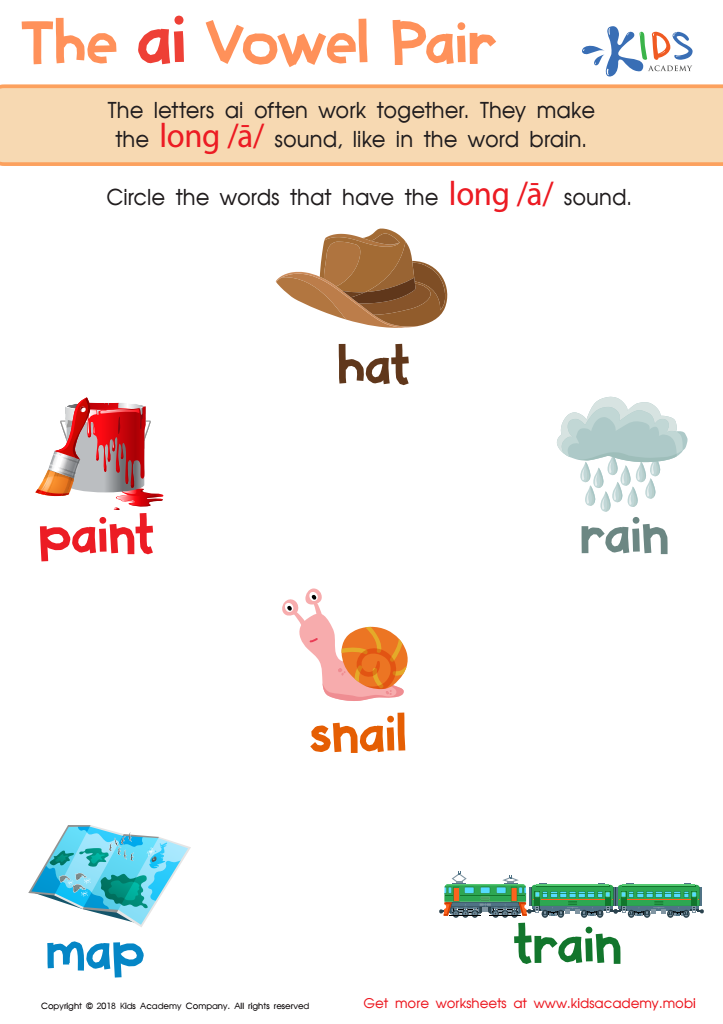

The AI Vowel Pair Worksheet
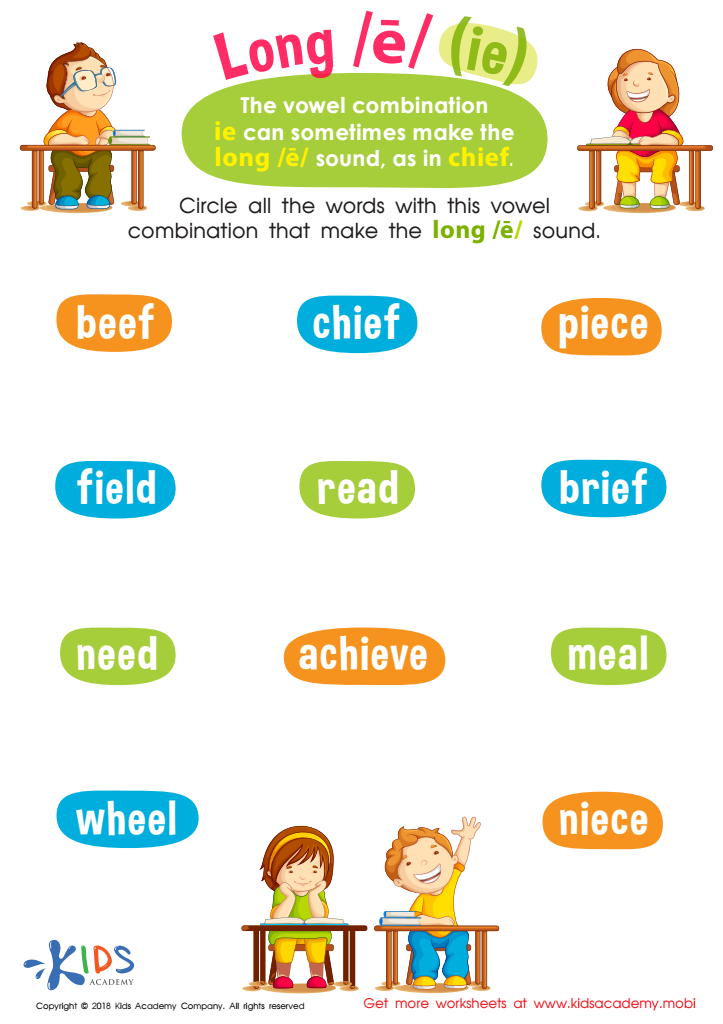

Reading: Long E and IE Worksheet
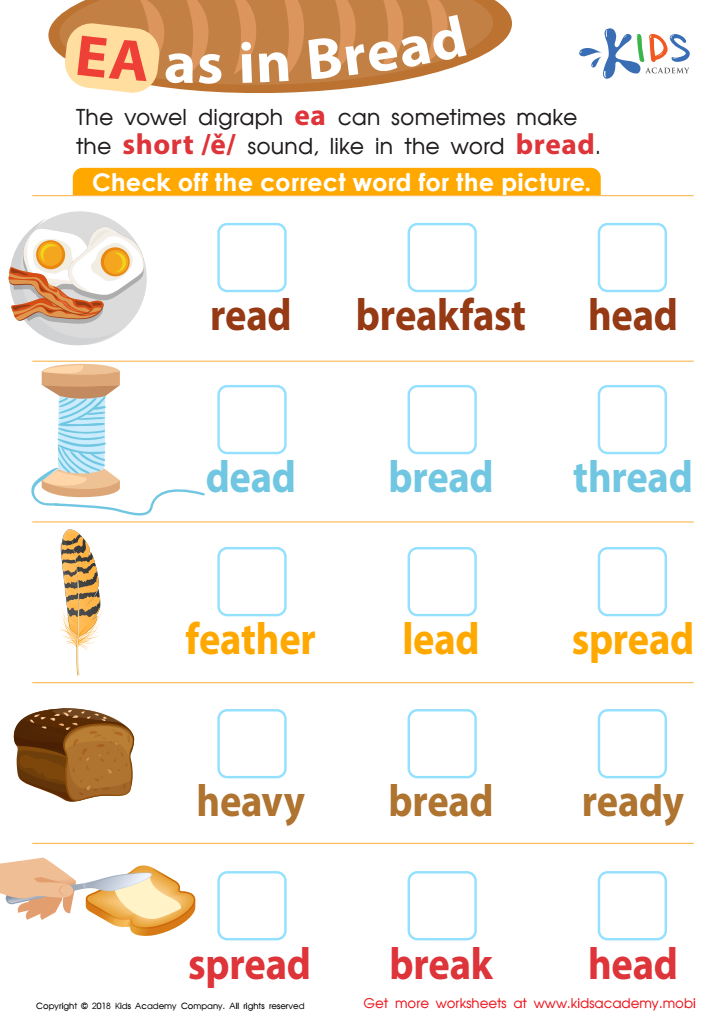

Reading: EA as in Bread Worksheet
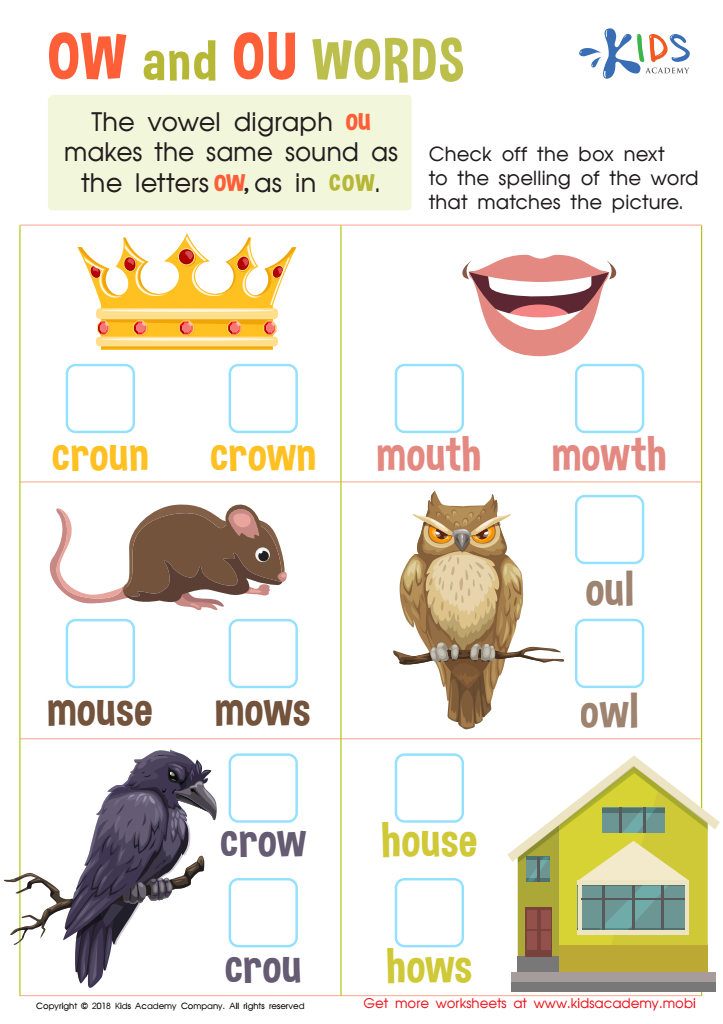

Reading: OW and OU Words Worksheet
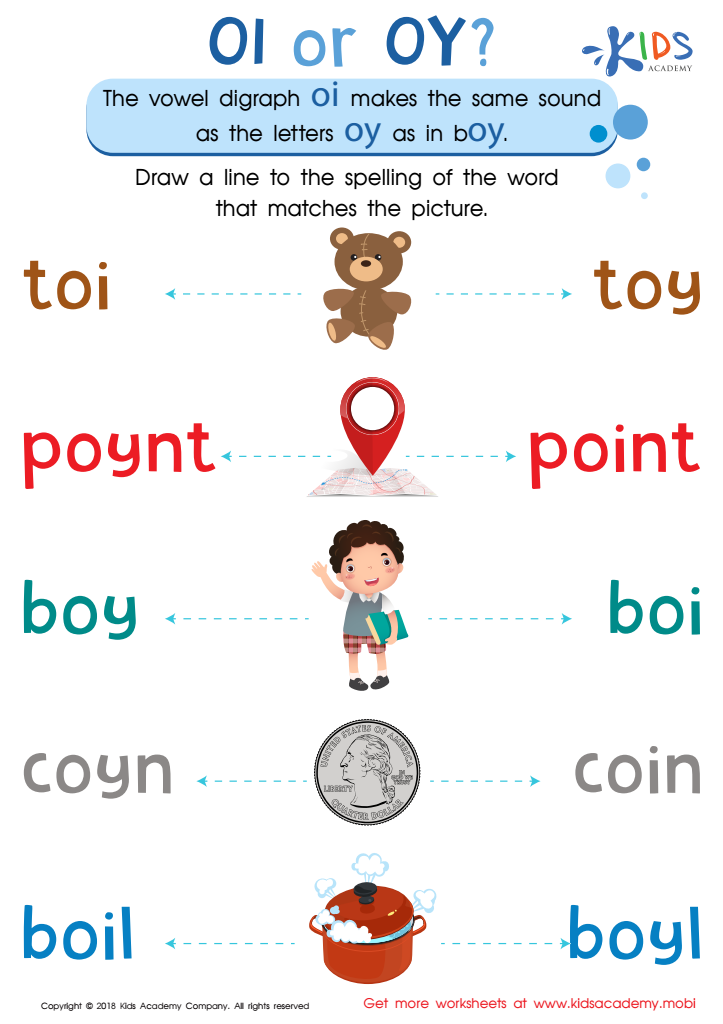

Reading: OI and OY Worksheet
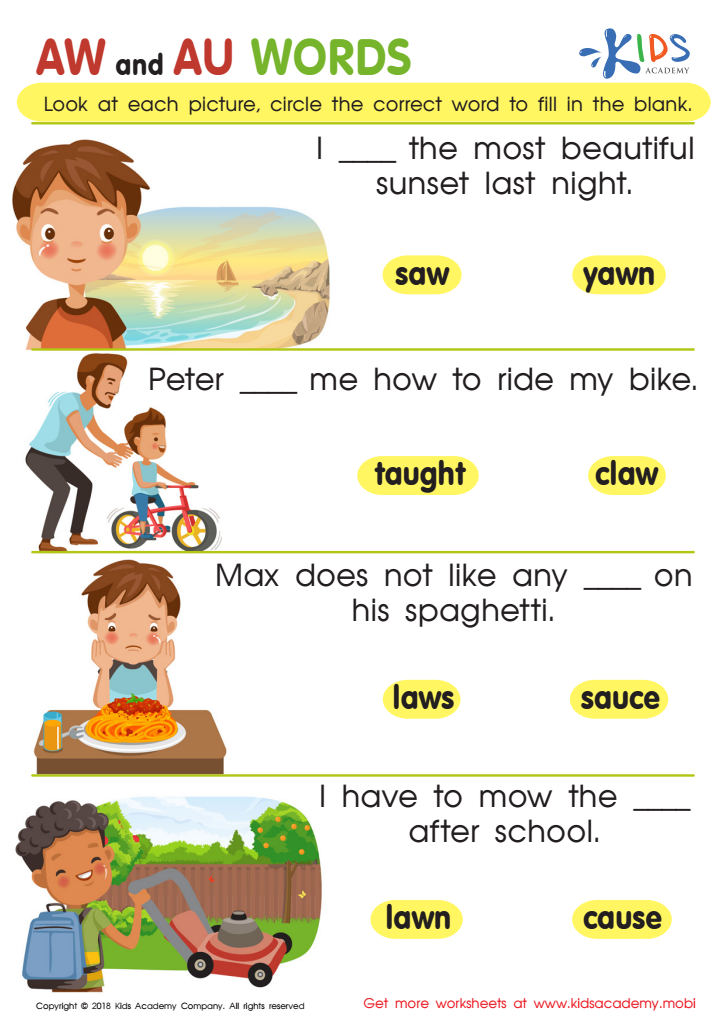

Reading: AW and AU Words Worksheet
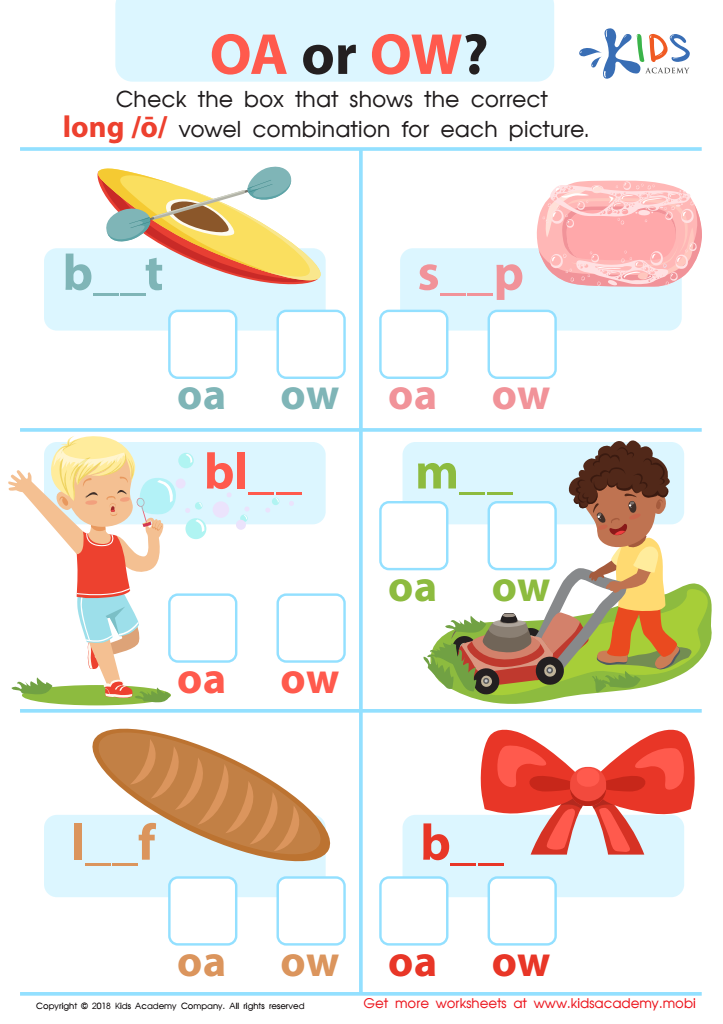

Reading: OA or OW Worksheet
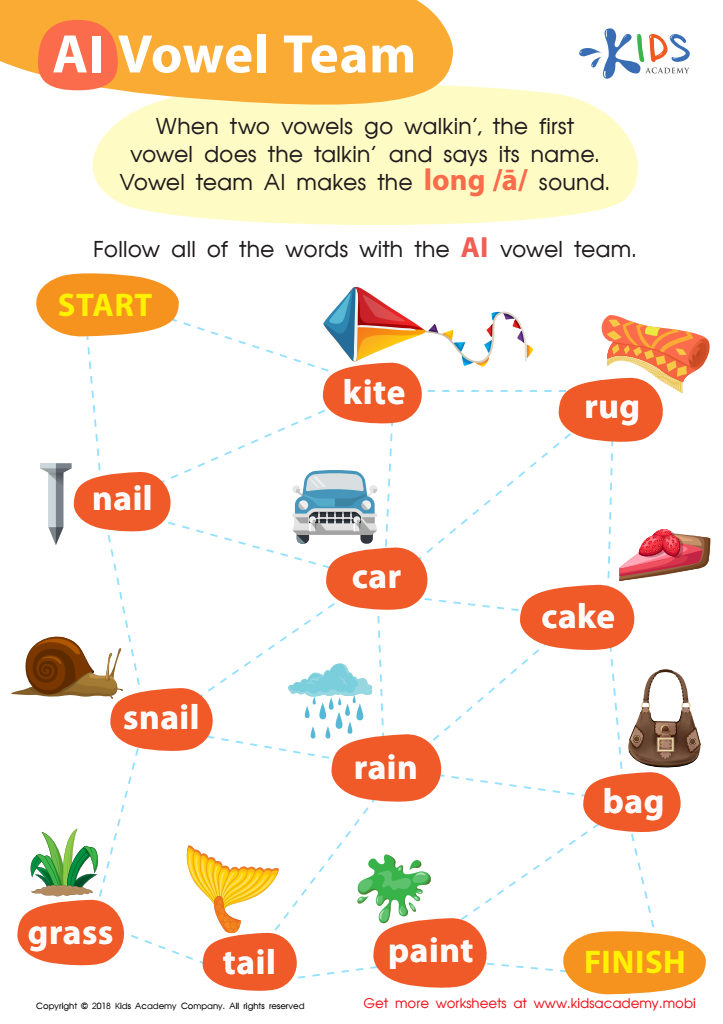

Reading: AI Vowel Team Worksheet
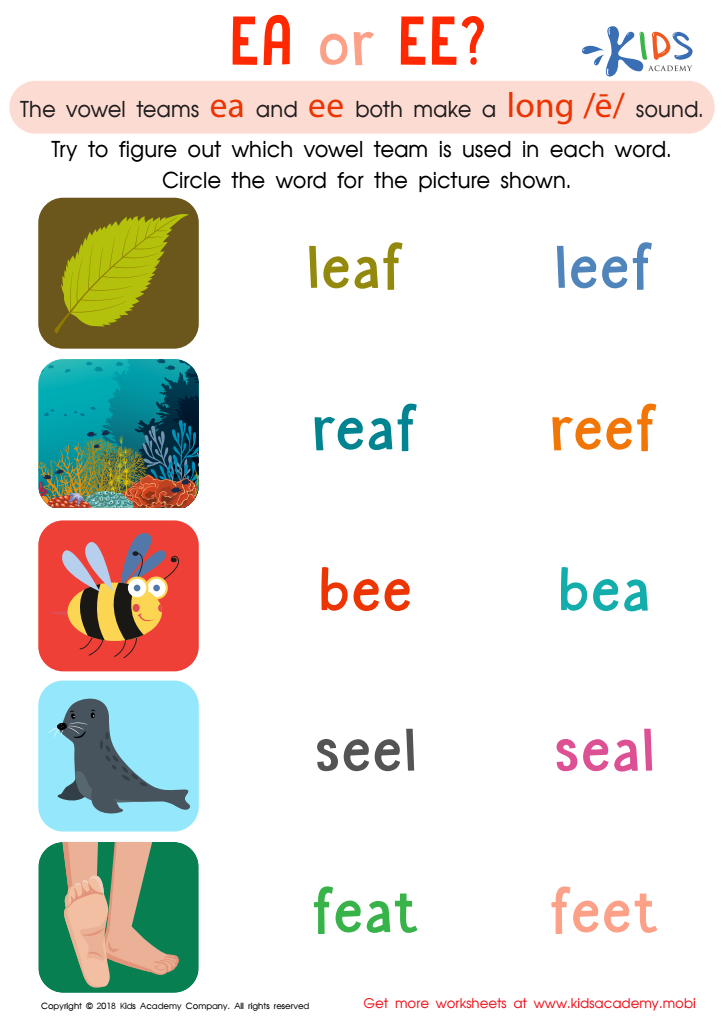

Reading: EA and EE Worksheet
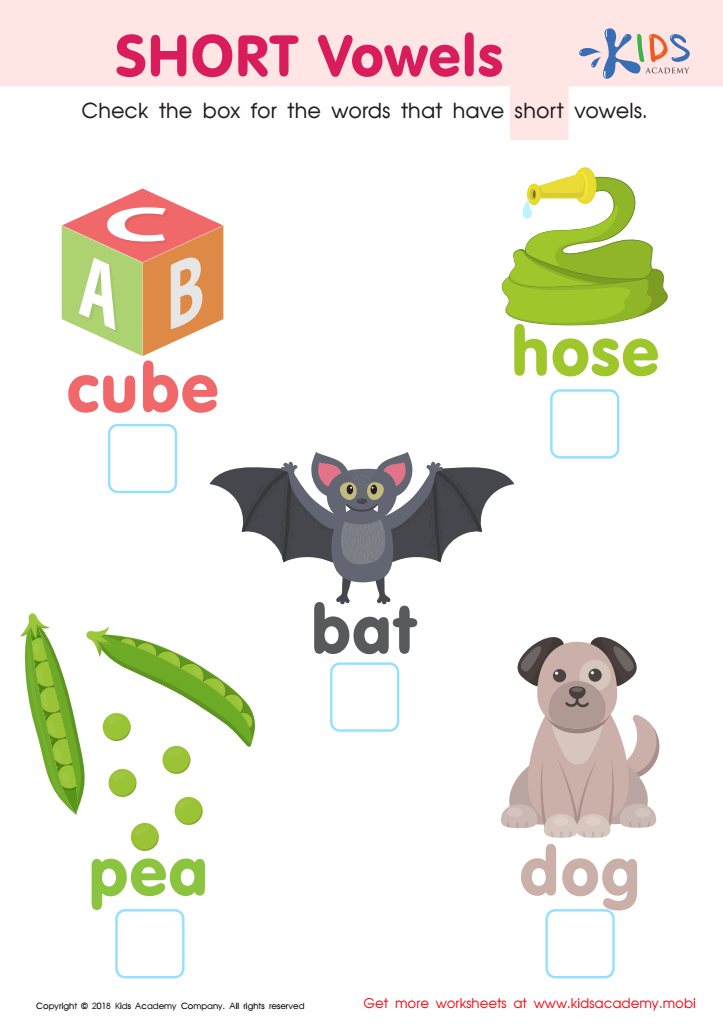

short vowels Worksheet
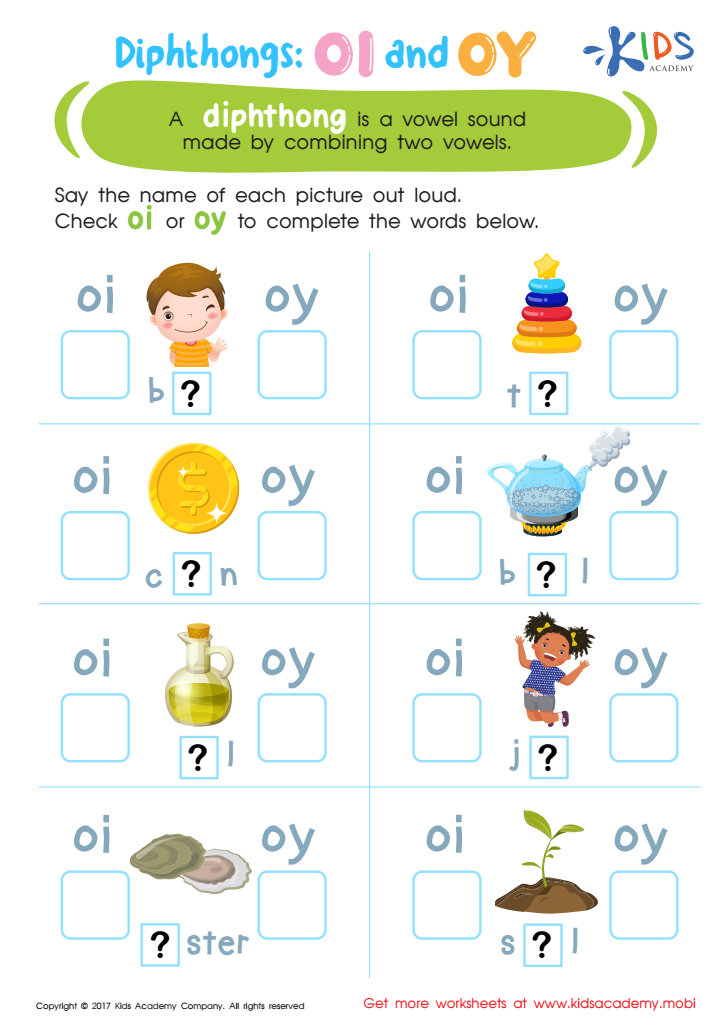

Vowel Diphthongs OI OY Worksheet
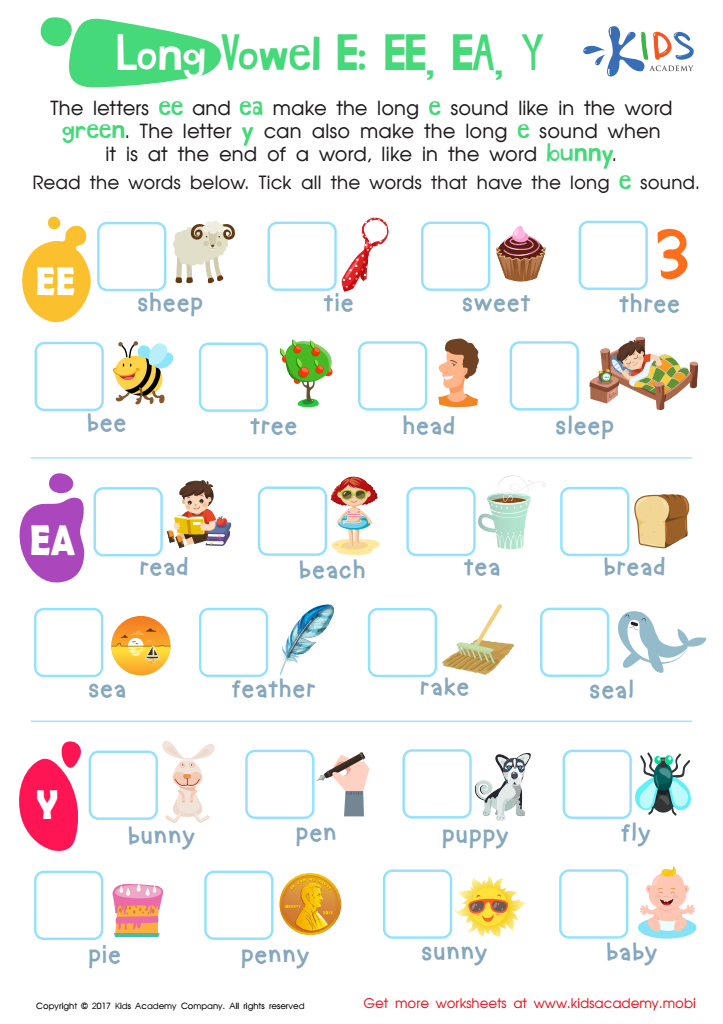

Long Vowel E Printable
Vowel blends are crucial for children aged 5-7 as they form a foundational element of reading and phonics. Understanding vowel blends—combinations of vowels with consonants that create distinct sounds—helps young learners develop crucial decoding skills. As children begin to encounter more complex words, recognizing these blends enables them to unpack unfamiliar words with greater confidence.
Moreover, mastery of vowel blends enhances vocabulary acquisition and boosts reading comprehension. When children can sound out words more effectively, they become more engaged with texts, making reading a more enjoyable experience. This cognitive development fosters a love for reading, which is essential for lifelong learning.
Additionally, proficiency in vowel blends links to overall literacy success. Students who grasp these concepts early are often better equipped for more advanced literacy skills, including writing and critical thinking. This can lead to improved academic performance in school.
Finally, the home and school environments play a vital role in promoting vowel blend understanding. Parents and teachers can collaborate to provide diverse reading materials and engaging activities that highlight these sounds, ensuring that children develop a strong literacy foundation early on. Attention to vowel blends directly impacts cognitive growth, self-confidence, and a child's future relationship with learning.

 Assign to My Students
Assign to My Students




